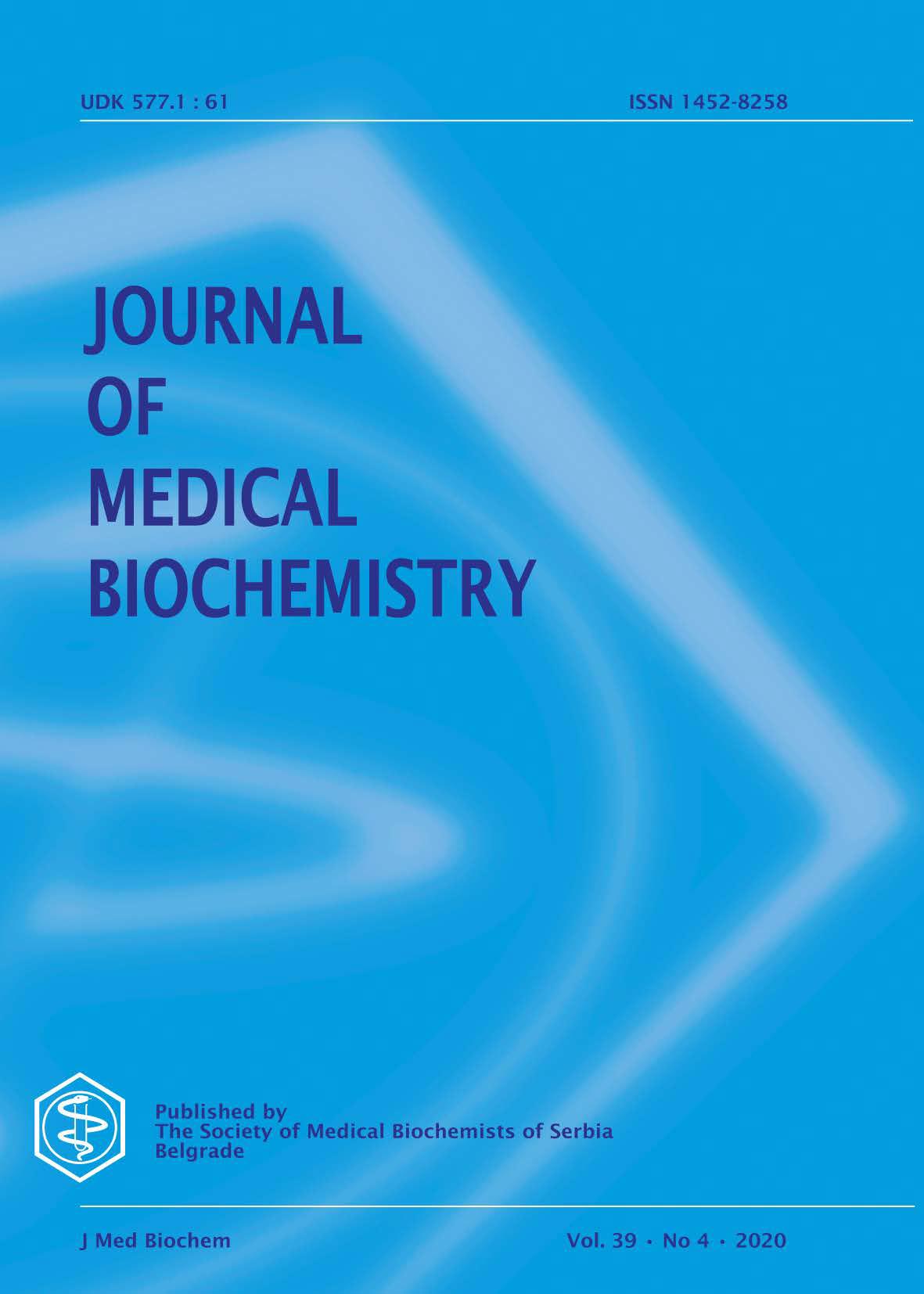PREANALYTICAL ERRORS IN EMERGENCY DEPARTMENT SAMPLES: INVESTIGATING ERROR SOURCES
Abstract
Background: The presence of preanalytical errors is arecurring fact in all areas of healthcare that send samples to laboratories. Increasing the knowledge of possible sources of error in the preanalytical phase has been the objective of this group during the last 10 years.
Methods: In this study, descriptive research has been carried out using professionals’ opinions obtained by means of the Strengths, Weaknesses, Opportunities, and Threats method in a focus group.
Results: The opinions expressed within the focus group have emphasised the importance of patients’ safety andwillingness for the introduction of a computerized analytical module. The most commented weakness in both hospitals was the transport of samples through the pneumatic tube.
Improving the duration of workers’ contracts, especially in the laboratory, and creating a circuit for professional’s localization during the work shift to facilitate potential error solving are some opportunities for the future.
Conclusions: Different approaches have been developed depending on the healthcare scenario. For this, establishing a flow of information between the different professionals allows identifying identical aspects through a priori, different points of view. The line to follow is to improve the safety of the patient and also to give professionals an opportunity to express themselves.
References
Romero Ruiz A. Fuentes de error en la toma de muestras sanguíneas. Recomendaciones para la fase preanalítica. Metas de Enferm 2007; 10(6): 55–60.
Dreisinger N, Zapolsky N. Ethics in the Pediatric Emergency Department: When Mistakes Happen: An Approach to the Process, Evaluation, and Response to Medical Errors. Pediatr Emerg Care 2017; 33: 128–31.
Ferreras Amez JM, Sarrat Torres MA, Arribas Entrala B, et al. Reducción de la determinación de coagulación en las pruebas analíticas básicas en los servicios de urgencias. Emergencias 2017; 29: 109–12.
Salinas M, López M, Uris J, et al. Variabilidad en la oferta y en la solicitud de determinaciones de laboratorio en pacientes de servicios de urgencias hospitalarios. Emergencias 2014; 26: 450–8.
Gómez-Salgado J, Romero A, Caparrós IS, et al. Pre-analytical errors: a preliminary approach to the point of view of primary health caregivers. Clin Chem Lab Med 2015; 53: 225–9.
Gómez-Salgado J, Romero A, Cobos A, et al. Pre analytical errors: the professionals' perspective. Clin Chem Lab Med 2014; 52: 53–5.
Romero A, Gómez-Salgado J, Romero-Arana A, RuizFrutos, C. Utilization of a healthcare failure mode and effects analysis to identify error sources in the preanalytical phase in two tertiary hospital laboratories. Biochem Med (Zagreb) 2018; 28(2): 020713.
Lippi G, Becan-McBride K, Behúlová D, et al. Pre-analytical quality improvement: in quality we trust. Clin Chem Lab Med 2013; 51: 229–41.
Lippi G, Mattiuzzi C. Project management in laboratory medicine. J Med Biochem 2019; 38: 401–6.
Plebani M, Carraro P. Mistakes in a stat laboratory: types and frequency. Clin Chem 1997; 43: 1348–51.
Carraro P, Plebani M. Errors in a stat laboratory: types and frequencies 10 years later. Clin Chem 2007; 53: 1338–42.
Giavarina D, Lippi G. Blood venous sample collection: Recommendations overview and a checklist to improve quality. Clin Biochem 2017; 25: S0009–9120(17)30090–5.
Lippi G, Mattiuzzi C. Biological samples transportation by drones: ready for prime time? Anals Translational Med 2016; 4: 5.
Cakirca G, Erdal, H. The Effect of Pneumatic Tube Systems on the Hemolysis of Biochemistry Blood Samples. Journal of Emergency Nursing 2017; 43(3): 255–8.
Arslan DF, Karakoyun I, Isbilen B, Basok, Aksit ZM, Celik E, Dogan K, Duman C. The effects of education and preanalytical errors. J Med Biochem 2018; 37; 172–80.
Copyright (c) 2020 Journal of Medical Biochemistry

This work is licensed under a Creative Commons Attribution 4.0 International License.
The published articles will be distributed under the Creative Commons Attribution 4.0 International License (CC BY). It is allowed to copy and redistribute the material in any medium or format, and remix, transform, and build upon it for any purpose, even commercially, as long as appropriate credit is given to the original author(s), a link to the license is provided and it is indicated if changes were made. Users are required to provide full bibliographic description of the original publication (authors, article title, journal title, volume, issue, pages), as well as its DOI code. In electronic publishing, users are also required to link the content with both the original article published in Journal of Medical Biochemistry and the licence used.
Authors are able to enter into separate, additional contractual arrangements for the non-exclusive distribution of the journal's published version of the work (e.g., post it to an institutional repository or publish it in a book), with an acknowledgement of its initial publication in this journal.

